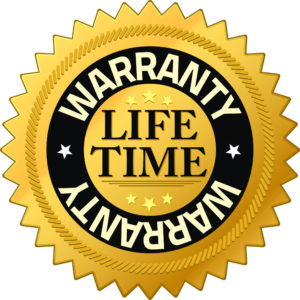Our friends at HomesteadBasics.com posted an article that I found valuable for reference-relevance. Here it is:
Cinnamon serves uses beyond bread pudding, french toast, and tea. In fact, Pliny the Elder referenced an unknown native people's guarding of a pricey cinnamon by “a terrible kind of bats,” circa 77 AD.1 Both bark and flower have their practical application. Following are some important facts about cinnamon which should prove useful to you.
Both cassia and true cinnamon come from the genus Cinnamomum (C.), and the Lauraceae family. Although related, cassia (Cinnamomum aromaticum or Cinnamomum cassia) is not to be confused with true cinnamon, Ceylon cinnamon (Cinnamomum zeylanicum or Cinnamomum verum). Cassia identifies cinnamon originating from Southeast Asia and which is the commonly available ground cinnamon here in the States.
Constituents of cinnamon include coumarins, gum, mucilage, sugars, tannins, and volatile oil.1
Bark
Ceylon cinnamon and cassia are easily distinguished by their unique roll structures, texture, and colors:

Ceylon cinnamon have an identifiable single roll, are thin, brittle, and tan in color.

Cassia rolls look like scrolls (double-roll), are thick, hard, and dark brown.
Typically, the bark of cinnamon is used orally. My copy of Natural Medicines Comprehensive Database 2 cites the following ailments/conditions associated with its oral application, as a(n):
- anthelmintic- used in addressing parasitic intestinal worms
- antidiarrheal- used to treat diarrhea
- antiflatulent- used to reduce intestinal gas
- antimicrobial- kills or inhibits the growth of microorganisms
- antispasmodic- used to suppress smooth muscle spasms within the gastrointestinal tract
- appetite stimulant
Twigs

The Chinese name for cinnamon twigs is gui zhi.
Traditionally, the Chinese use the twigs (gui zhi) to stimulate circulation in the hands and feet, enhancing warmth. Its ability to promote sweating assists in caring for individuals with colds.1
Essential Oil
Cinnamon in the essential oil form is often produced via steam or water extraction from the inner bark of the tree.
References
1 Ody, Penelope. The Complete Medicinal Herbal. 1st ed. New York: DK Publishing, Inc.; 1993: 192 p.
2 Jellin JM, Gregory PJ, Batz F, Hitchens, K, et al. Pharmacist's Letter/Prescriber's Letter Natural Medicines Comprehensive Database. 5th ed. Stockton, CA: Therapeutic Research Faculty; 2003: pg. 358.
3 EverythingDoTerra, n.d. Cassia Cinnamomum cassia. http://www.everythingessential.me/Oils/Cassia.html. Accessed 2011 November 1.
4 Abundant Health. Modern Essentials: A Contemporary Guide to the Therapeutic Use of Essential Oils. Utah: Abundant Health; 2011: 235 p.








Any concerns it might kill or negatively affect intestinal fauna?
Good question. I have not read a single reference about cinnamon adversely affecting intestinal fauna in healthy individuals. We simply featured the article. You might try contacting the author of the post at HomesteadBasics.com, since it is their original article. I would also probably refer to the sources that they cited in references.
-TBG
Here is an interesting post, although it’s always best to do your own searches:
“And, natural antibiotics do not wipe out the trillions of friendly bacteria that play a crucial role in immunity. More likely, they also play a secondary role in stimulating the body’s natural immune response.”
http://www.flu-treatments.com/natural-antibiotics.html
I like cinnamon on toast and anything with apples or pumpkin.
Scant info in the report. Not completely worthless but close to it.
Thanks for taking the time to comment Jerry. Glad you took the time to read it too. Wish I could offer you a refund on the time you spent to read and comment. I’ll give you a discount on product if you decide to order with us.
TBG
Very interesting post. Thank you.
It is astonishing, though, the extent to which we ‘modern day’ humans have lost so much basic, formerly common, knowledge, regarding natural healing remedies and the beneficial potential in the plant life that surrounds us.
A recent discovery of mine, which might interest readers of this blog entry, is a blend of herbs and spices that’s been prepared in the Levant and North Africa for millennia, known as Za’atar. While the individual ingredients – oregano, savory, thyme, marjoram, hyssop, and other – have their own specific properties, together they’ve been known to improve concentration, alertness and memory.
Another popular plant in the Middle East and Africa, known for both its unequaled nutritiousness and medicinal applications, is Purslane – often considered little more than an annoying weed by farmers and gardeners in the “West”. In the current era of increasing poverty and malnutrition, the availability of nutritious plants such as Purslane could only be beneficial.
I’ve wandered way off the topic of cinnamon [!], but the point is that, while quantities of common sense / knowledge has been lost in ‘Industrialized’ societies, most if not all of it can still be rediscovered by referring to culinary and medicinal practices in China, Central Asia, Persia, the Middle East and North Africa …
.
Thank you for posting such a great comment & good information.
TBG
I use powdered cinnamon in my oatmeal and eggs every morning to help treat my diabetes. I’m going to locate some of the Chinese Gui Zhi to help treat the numbness in my feet, hands and help with erectile dysfunction common in diabetics. Thanks
I’m glad to hear that you are managing your health Miguel. Diabetes can overwhelm many people but proactive individuals as yourself are an inspiration to us all! I wish you continued health.
TBG
I also try to use cinnamon with anything it might taste good in to help with my diabetes.
So far it has helped to lower the amount of insulin I need to take, which can only be a positive effect.
Juliet Mae sells three kinds of cinnamon online. I like the Siagon cinnamon the best, it has a high oil content, is strong in flavor but has an almost sweet aftertaste. I don’t know about the health stuff but it is yummy!